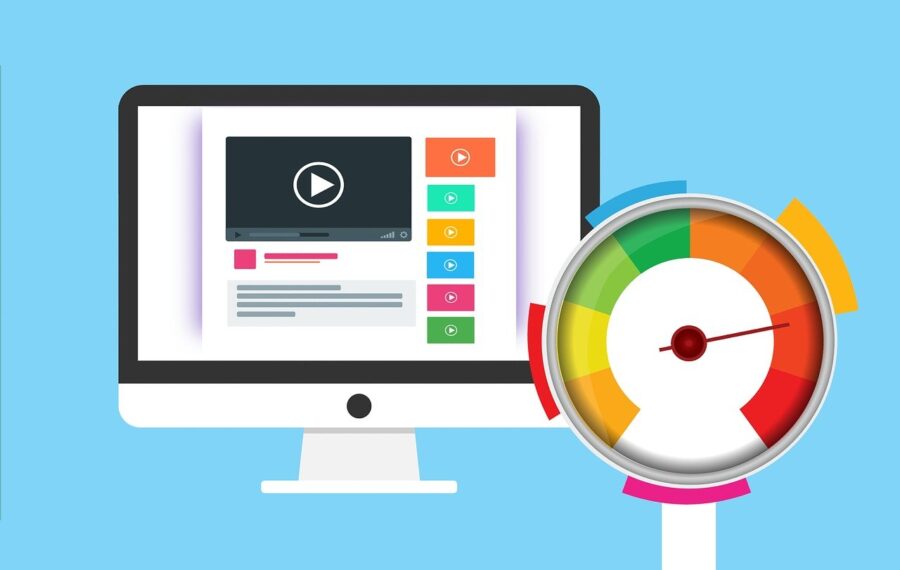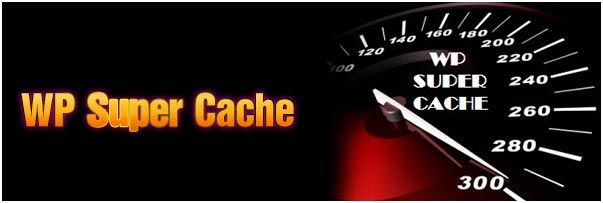Boost Your Website Performance With A WordPress Cache Plugin

WordPress is one of the most influential platforms preferred by most business owners to develop their online business. You can take various actions for optimising your WordPress site, but installing a cache plugin will hold the greatest efficiency on your page load time. Once visitors get to your online presence, they have to request various information from the web host. They should send a request for JavaScript, Images and CSS. Additionally, they must retrieve your content from the WordPress database as well. Each of these activities adds to your entire loading time.
WordPress cache plugins deal with this problem by developing a static edition of your content and conveying it to the audiences. This surely decreases the load time of your site and you can observe progress within the whole website presentation of about ten times.
Table of Contents
- What are Cache Plugins?
- Utilising WordPress Cache Plugins
- Do You Need a Website Cache Plugin?
- Top 3 WordPress Cache Plugins
- Caching and Minifying Your Website
- How to Install a WordPress Cache Plugin?
- FAQs
What are Cache Plugins?
A caching plugin creates an image of your website pages on your server. When a user visits your website, the server doesn’t create a dynamic page and serves it to the user. Instead, it takes that image and serves it to the user. This increases retention and reduces the time it will take to load the complete website at the client’s end. The served version is a lot lighter and doesn’t require processing the heavier WordPress PHP scripts.
Read more on PHP updates on our blog – How to update PHP version for your WordPress website?
Utilising WordPress Cache Plugins
Speed is important for every website. Not only is it a ranking factor, but it also helps visitors get the information from your website faster and interact with the website whether it’s buying something or getting the information they want.
We have a short span these days with so many options to choose from. We want to visit only those websites that can open within seconds so that we can get the information we want or make the required action.
Sadly, that’s not always the case and that’s why most visitors leave a website while it is still loading. On average, a website takes around five to seven seconds to load. This is just too much for a visitor. Because the attention span of a visitor is less than three seconds. 1, 2, 3… and the visitor will close the web page/hit the back button and try the second page on Google search.
So, what’s the solution? How to improve site performance so that visitors don’t leave your website?
That’s where cache plugins come to help. Let’s learn about these cache plugins in detail and understand how they can help you improve site performance and decrease the bounce rate.
Do You Need a Website Cache Plugin?
Yes, if your website has dynamic content that requires the webserver to process scripts before serving the page to the user, you can benefit from a good website caching plugin. A good website caching plugin will save you the cost of optimising your website for performance again and again. It will also fix most of the errors you get in the Core Web Vitals in the Google Search Console.
Website cache is important because it improves the efficiency of the server, reduces page load time, increases user retention, and lowers the site’s bounce rate.
Moreover, since the server doesn’t have to process heavy website scripts, it takes less bandwidth and puts a minimum load on the server.
Top 3 WordPress Cache Plugins
If you are using a WordPress website, you will get multiple cache plugin options to choose from. Some of the best cache plugins on WordPress include:
- WP Super Cache
- W3 Total Cache
- Quick Cache
There are many more…
But, we won’t confuse you with all these cache and minifying plugin options, instead, we will explain what is the difference between the two and how you can get both in a single plugin.
For your ease, here is a Cache plugin that makes the appearance of your site better:
WP Super cache

WP Super Cache is the most downloaded caching plugin on the marketplace. As reported from the official WP Super Cache page, this plugin has been installed more than a million times and it is also free, easy to employ and needs little to no configuration. This WordPress cache plugin is capable of delivering the static page with mod_rewrite which is quicker compared to normal PHP-created HTML caching depending on your preference which indicates all the visitors do not have to load every WordPress PHP file.
Furthermore, they simply can obtain a static HTML page. Nevertheless, there is the ‘Legacy caching mode, which means if you are logged in, you will not experience super-cached HTML files. WordPress plugin WP Super Cache is also capable of enabling you to switch the order where the plugin loads. Additionally, this plugin also benefits you with a scheduler that clears cached paged when you can allocate in progress. It also supports Content Delivery Networks (CDN).
W3 Total Cache

WordPress Performance Optimisation (WPO) framework W3 Total Cache is mainly designed to develop customer experience and the load time of a page. It is recommended by the well-recognized web host, namely Page.ly, Synthesis, DreamHost, MediaTemple, GoDaddy, Host Gator and much more. It is well liked by many organisations such that AT&T, mattcutts.com, mashable.com, stevesounders.com, yoast.com and countless more. This plugin enhances the customer experience of your online presence by improving the performance of a server, decreasing download time and offering clear content delivery network (CDN) incorporation. Additionally, it also benefits your online presence with excellent tech support and maintenance services.
Quick cache
WordPress cache plugin Quick cache is the most recognised and effectual cache plugin that performs taking the images of your web page delivering a faster understanding experience to your audiences. This plugin also recognises not to give out cached pages to logged-in visitors or audiences who currently left a comment. You can find a total of eight sections within the option page although there is truly no more setting to configure. The details or descriptions provided for all the settings make Quick Cache noticeable and stand ahead of additional cache plugins. It also provides some details that will surely help you to understand exactly the task of each setting. This makes Quick Cache the most recognisable and preferred WordPress cache plugin for most of the audience.
Caching and Minifying Your Website
Whichever cache plugin you choose, make sure that it offers everything you need to make your site’s performance faster. A few features that a decent caching plugin should offer include:
Browser Caching: Browser caching allows your browser to store the content of the web page if you are a repeat visitor. When you open the website, instead of the server loading all the content, your content is loaded from the browser, reducing server load and increasing page performance.
Page Caching: The image of a page is stored on the server. When a new user visits it, the page cache is activated and it serves the user with that page instead of the server rendering it dynamically. This decreases page load time. Page cache is possible only for pages that get the most hit.
Gzip Compression: GZip compresses the page on the server side so that it is loaded on the browser faster. When a browser receives a compressed page, it decompresses it. For Gzip compression to work effectively, the page size should be below 1MB so that browsers can load and decompress it instantly.
Database Optimisation: A good cache plugin should also offer database optimisation so that the bloat is removed from the server and loads the website faster.
Lazy Loading: A simple technique of deferring the loading of images, scripts, and content that are not part of the header tag. Lazy loading offers faster page rendering and reduces Time to First Byte (TTFB).
JS/HTML Minification: Everyone writes JAVA scripts and HTML differently. With minification, all random spaces, unnecessary code, and comments are removed from the code files decreasing file size and increasing performance.
DNS Prefetching: Most websites get hosting from one host and domain from another host. With DNS prefetching, the connection time in connecting to the DNS is reduced.
How to Install a WordPress Cache Plugin?
Here is how to install a cache plugin on your WordPress website:
- Select a cache plugin from the WordPress plugin menu. There are 100s of cache plugins available but the best ones are already offered to you.
- Install the plugin on your WordPress installation. Click Plugins > New Plugin > Install
- Optimise the plugin settings and then enable it on your website. Each plugin has a different setting, you need to make sure that your website can support the settings that you have enabled on the plugin.
- Finally, test your website performance with a speed testing tool like Pingdom. Make sure to test the website speed first before enabling the plugin and then after it.
Unsure How to Install a Caching Plugin? Let Us Handle It for You.
We can help you optimise your website’s performance. If you are not sure ho
To Wrap Up,
WordPress cache plugin performs by saving the specially produced HTML files and after that helping them from the cache at the time a request is made; you can simply click o the refresh button rather than loading every PHP script from WordPress. Consequently, the WordPress site loads speedily for your audiences. I hope you got some idea of the WordPress cache plugin; you can pick the best from the above list and make your site fast loading with these plugins.
FAQs
Can cache plugins impact my website’s SEO ranking?
Yes, cache plugins can impact your website rankings. Cache plugins are known to improve your website performance and speed which can help to improve your website search engine rankings.
How often should I clear my cache?
You should clear your cache as much as your website content is updated. If your website content is updated frequently, you need to clear the cache on a similar frequency.
Can cache plugins cause security vulnerabilities?
Cache plugins generally are secure and safe. But, if you are using the wrong configurations or outdated plugins, these may invite potential risks. If you want to make sure your cache plugins are not a threat to your website security, make sure to monitor them and keep the plugins updated.
Should I use a free or premium cache plugin?
Using a free or premium WordPress cache plugin depends completely on your choice. If you want extended features and support, premium might be the right option for you. If you are a beginner and do not require complex features, you can use the free version as well.
Does WordPress have a built-in cache?
WordPress does have a built-in cache system. This however is not as effective in improving your website performance as much as the dedicated WordPress cache plugins.
Is it safe to delete the cache on WordPress?
Yes, it is generally safe to delete the WordPress cache. Most users do it after they have made changes to the page and website so that old versions of the website can be replaced with new ones. However, it may slightly increase the server load and your website visitors may generally notice longer website loading times.
Are you looking for a WordPress developer in Sydney? If yes, get in touch.
